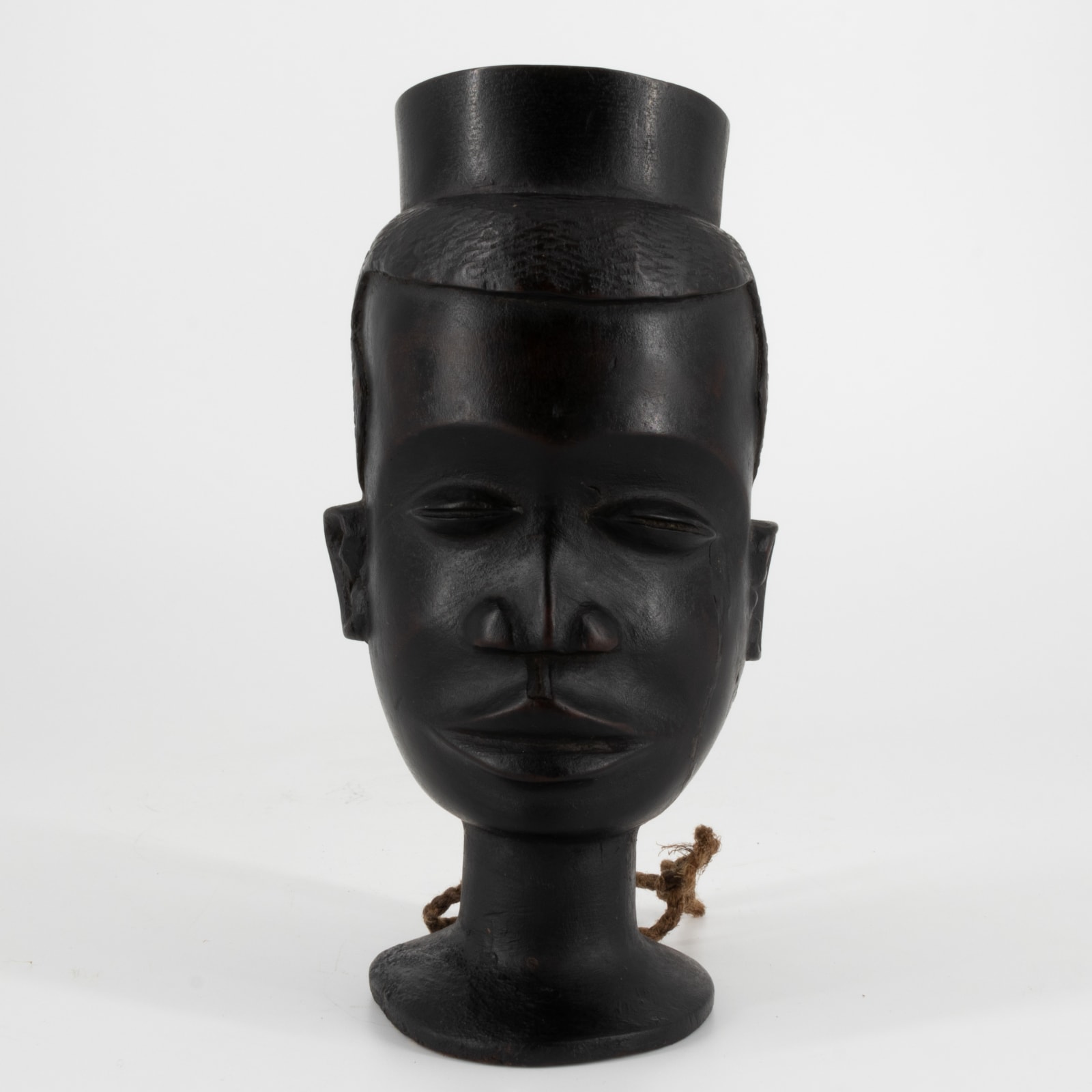Kuba Palm Wine Cup, 20th century CE
Wood
height 16.5 cm
height 6 1/2 in
height 6 1/2 in
ES.8753
The Kuba Kingdom, also known as the Kingdom of the Bakuba, is a conglomerate of several smaller chiefdoms which was formed in the 17th century in the centre of what...
The Kuba Kingdom, also known as the Kingdom of the Bakuba, is a conglomerate of several smaller chiefdoms which was formed in the 17th century in the centre of what is now the Democratic Republic of the Congo. It reached its peak during the 19th century, before the arrival of Europeans to the area (although it still exists today). It was founded in 1625 by Shyaam a-Mbul a Ngoong, who came from outside the area and united several principalities under his leadership. The government was controlled by a king (nyim) who attended a court council with representatives from all of the Kuba subgroups. As well as elected political offices, the kingdom also had a judicial system, taxation, a police force, and a military. It gained wealth through the adoption of advanced techniques from neighbouring peoples, as well as the cultivation of New World crops such as maize and tobacco. The wealth of the kingdom allowed for the development of a distinctive artistic tradition because of the desire of the elites to commission artworks that could display their power. Types of objects frequently seen include embroidered raffia textiles, headdresses, masks, ndop (sculptures representing Kuba kings), cosmetic boxes, and carved palm wine drinking cups. Palm wine, made from the sap of palm trees, is a popular beverage among the Kuba people. Highly decorated vessels became common as a way for elite individuals to compete with each other, as offering wine to friends in an impressive cup was a way of showing their wealth and status.
This cup takes the form of a human head, with a handle connecting from the edge of the wide base to the back of the head. It is tall, with a particularly large upper section. The face has a wide mouth, with large lips, and a wide nose. The eyes are closed, conveying a peaceful expression. The eyebrows are only very lightly defined by a curve in the wood. The large forehead is framed by a high hairline, pointing inwards at the corners. This could represent a Kuba aesthetic practice of shaving the hairline back in order to frame and draw attention to the forehead, because it was culturally associated with wisdom. The hair is decorated with faint carved lines in order to indicate its texture. The head is hollow, with a tall rim emerging from the top in order to aid the function of the object as a drinking vessel.
This cup takes the form of a human head, with a handle connecting from the edge of the wide base to the back of the head. It is tall, with a particularly large upper section. The face has a wide mouth, with large lips, and a wide nose. The eyes are closed, conveying a peaceful expression. The eyebrows are only very lightly defined by a curve in the wood. The large forehead is framed by a high hairline, pointing inwards at the corners. This could represent a Kuba aesthetic practice of shaving the hairline back in order to frame and draw attention to the forehead, because it was culturally associated with wisdom. The hair is decorated with faint carved lines in order to indicate its texture. The head is hollow, with a tall rim emerging from the top in order to aid the function of the object as a drinking vessel.
